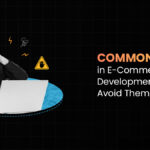Welcome to the world of deinfluencing, where being uncool is the new cool! In the age of social media, influencers have become the new rock stars, and the influencer market has become a multi-billion-dollar industry. From promoting products to brand influences to their massive followings. And also being flown out to exotic locations for sponsored posts, influencers seem to have it all and some might even say there is an over use of influencers today. But, what happens when the appeal of the influencer begins to fade? Enter deinfluencing, the new marketing tactic that prioritizes authenticity over perfection, and transparency over deception. In this blog, we will explore the rise of deinfluencing, its Influencer Impact On Audience, and whether it is truly the future of marketing.
It is the Influencer’s Market!
In the early days of the influencer market, it was a relatively new and unexplored space. Brands were excited to tap into the influence of social media stars, and influencers were eager to monetize their following. However, as the market grew, so did the number of influencers vying for attention.
Today, the influencer market has become oversaturated with influencers and sponsored content. This has made it increasingly difficult for brands to stand out and for audiences to trust the messages they are being bombarded with. With so many influencers competing for the same audience, it can be hard for brands to create an authentic connection with their target demographic.
Moreover, the overuse of sponsored content has led to a lack of authenticity in the influencer market. Audiences are becoming more aware of sponsored posts, and they are beginning to question the authenticity of the influencers they follow. As a result, many are turning away from influencers and seeking out more genuine sources of information.
Despite these challenges, the influencer market continues to grow. It is estimated that the market will be worth 28 billion rupees by 2026. With this over use of influencers it is clear that the market is in need of a shift towards authenticity and transparency. Brands and influencers who are able to prioritize these values are likely to be successful in the years to come.
How did deinfluence begin?
There has recently been a growing trend of influencers being called out for promoting products they don’t actually use or believe in, or for promoting products that are harmful to their audience. This has led to a decline in trust and credibility for both the influencer and the brand. In addition, many influencers have become oversaturated in the market, with countless brands approaching them for sponsorships and collaborations.
This has led to an overwhelming amount of sponsored content, making it difficult for followers to differentiate between genuine recommendations and paid promotions.
This is where the concept of deinfluencing comes in:
Rather than relying solely on influencers to promote their products, brands are starting to focus on more genuine forms of influence. This may include user-generated content, where customers share their own experiences with the product, or partnering with organizations that align with their values and mission.
By taking a step back from the over use of influencers in the market, brands can create more authentic connections with their audience. Instead of relying on someone else to do the promotion for them, they can engage with their customers directly and build a community around their brand. This can lead to a stronger brand identity and a more loyal customer base.
Examples of Brand Influence
Deinfluencing is a marketing tactic that focuses on transparency and honesty rather than perfect, curated content.
By prioritizing deinfluencing, brands can create a more authentic connection with their audience. This is because deinfluencing tactics are designed to be more relatable and trustworthy, rather than highly curated and aspirational. For example, brands’ influence methods can use real people in their advertisements, rather than paid models or influencers. This allows audiences to see themselves reflected in the brand’s messaging, and it can build a stronger emotional connection between the brand and its Influencer Impact On Audience.
Another deinfluencing tactic that brands are using is to be more transparent about their marketing practices. This includes clearly labeling sponsored content, disclosing any affiliate relationships, and being upfront about the use of paid promotions. By being transparent about these practices, brands can build trust with their audience and avoid the perception of deception or manipulation.
There are several examples of brand influences that have successfully implemented deinfluencing tactics. For instance, the clothing brand Everlane has built its entire marketing strategy around transparency and ethical production practices. The brand is known for its “Radical Transparency” approach, which involves disclosing the cost of production for each item and the markup that the brand adds. This has created a sense of trust and authenticity with its audience, and it has allowed Everlane to build a loyal following.
Another example is the beauty brand Glossier, which has built its marketing strategy around the idea of “Skin first, makeup second.” Rather than promoting unrealistic beauty standards or highly edited images, Glossier focuses on natural beauty and the idea that skincare should come before makeup. This approach has resonated with audiences, and it has allowed Glossier to become one of the most successful beauty brands in recent years.
Conclusion
It is also safe to say that deinfluencing tactics are not without their challenges. Brands must be careful not to swing too far in the opposite direction and come across as disingenuous or unprofessional. Additionally, some audiences may still prefer the aspirational and curated content that influencers provide, making it difficult for brands to completely move away from the influencer market.
Despite these challenges, it is clear that the influencer market is evolving. Brands that are able to adapt and incorporate deinfluencing tactics into their marketing strategy are likely to be successful in the years to come. However, it remains to be seen how effective these tactics will be in the long term and how Influencer Impact On Audience will continue to respond.



